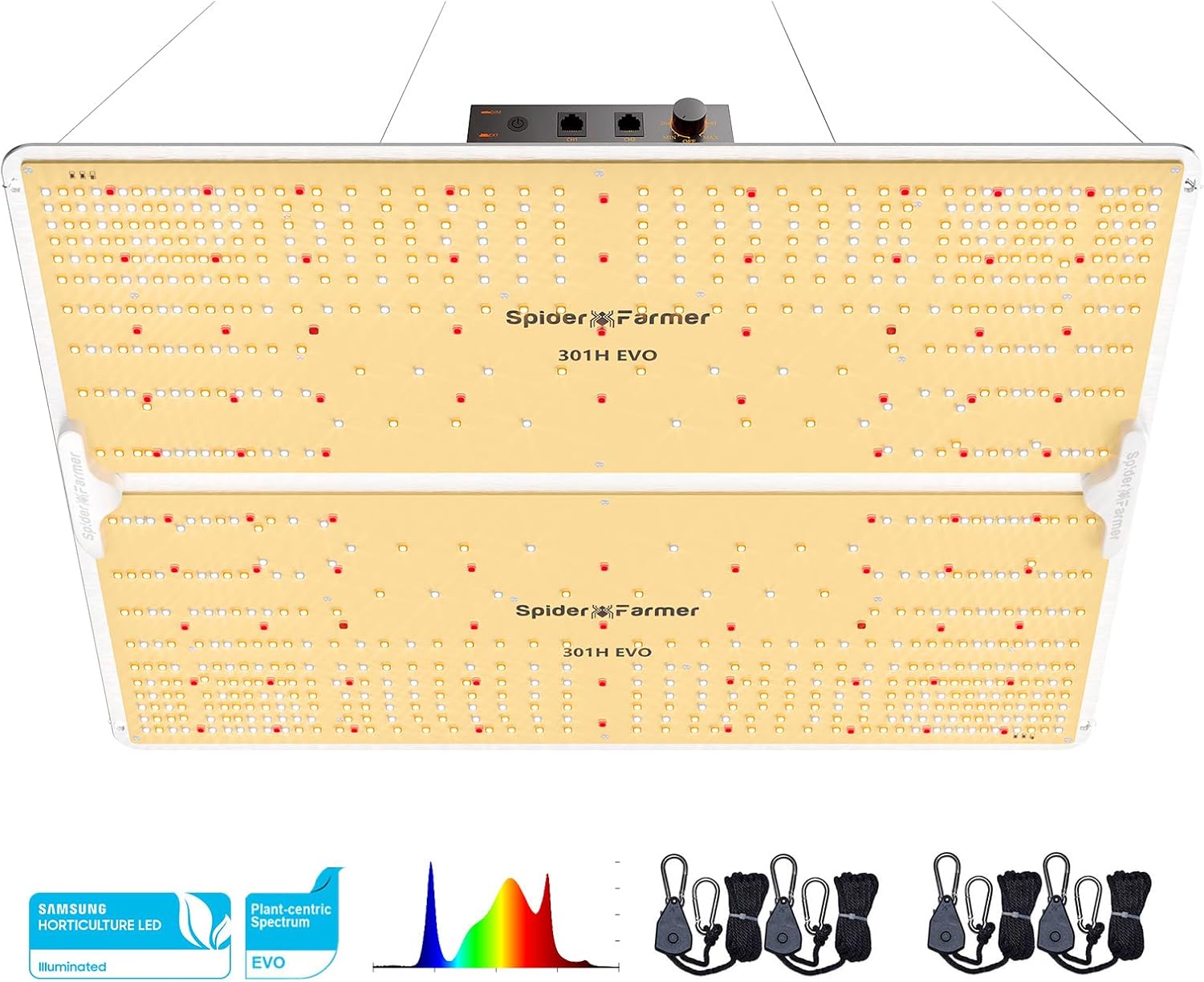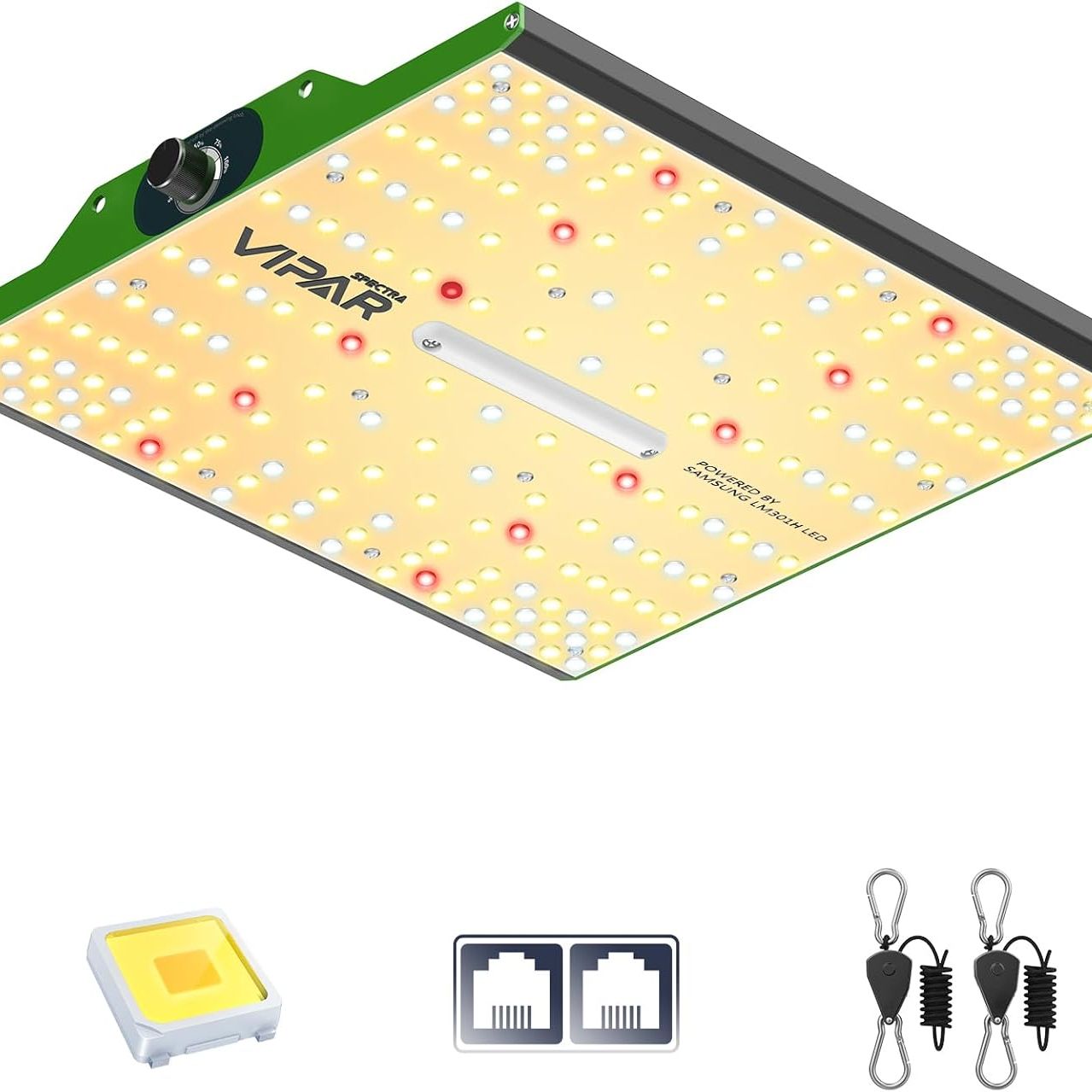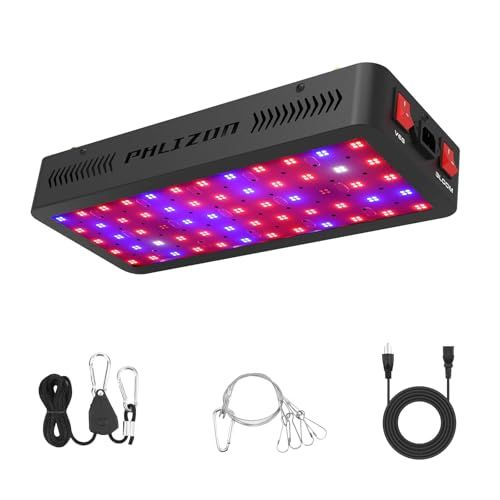This LED Light Is the Most Important Part of My Indoor Growing Setup – Here's Why I Love It
As an avid indoor gardener, I've tested enough lights to know what works without wasting wattage or space – and this one's worth every penny.


I started growing indoors 15 years ago, frustrated with winter’s lull and leggy seedlings under kitchen fluorescents that barely pushed past sprouts. My setup is a modest tent in the dining room, packed with peppers, herbs, and greens year-round. It's my escape from city winters, but early failures taught me light is the make or break.
Too dim, and plants stretch thin; too hot, and temps spike to 90F (32C), stressing everything. That's when I landed on grow lights for indoor plants as the fix, turning trial-and-error into consistent green.
The shift came after reading up on the basics of grow lights, and overviews, which stressed spectrum over sheer brightness. My first decent grow lamp light was a cheap LED bar, but it fizzled fast – uneven coverage left edges yellow, and energy bills crept up.
Now, with the Spider Farmer SF4000 grow light from Amazon, I've got a system that hums efficiently, supporting pepper plants in winter through every stage without babysitting. Grow lights like this make indoor edible gardening feel effortless, especially when you're juggling a day job and dreaming of that first ripe tomato.
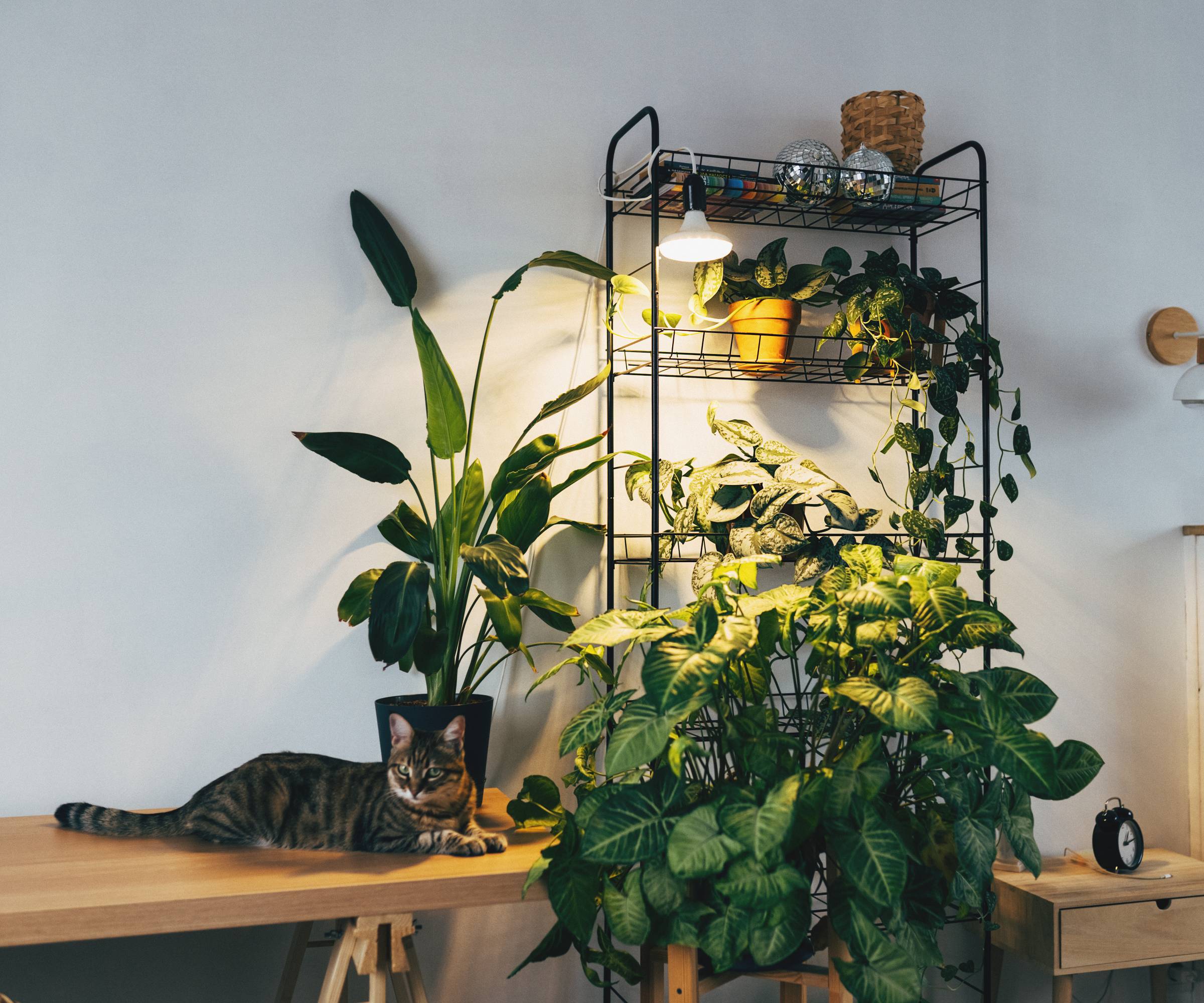
My Indoor Gardening Setup
My indoor gardening setup quite literally revolves around the Spider Farmer SF4000. Hung dead center in my 4x4 grow tent, which you can also find on Amazon, it anchors everything, bathing the space in full-spectrum glow.
It mimics equatorial sun and powers my sweet peppers, quirky heirloom tomatoes, succulents like aloe vera, and even my dwarf pink lemon tree. They all thrive as if they're growing in a greenhouse.
The tent's blackout cocoon also lets me dial in all the environmental parameters – from humidity to CO₂ – and blocks neighborhood light pollution and pollen drifting into the house. That's thanks to an inline fan that pulls air through a carbon filter to ensure clean exhaust.
Sign up for the Gardening Know How newsletter today and receive a free copy of our e-book "How to Grow Delicious Tomatoes".
Ventilation is key when it comes to growing in a tent light this. A small oscillating fan circulates air to fend off mildew and keeps humidity around 50-60 percent. I also have the option to tweak light cycles for vegetable or flower phases, mimicking natural rhythms when needed.
This setups is compact enough for my small home, but it's productive. It’s easy for my heirloom tomatoes to fill an entire freezer bag weekly.
My Favorite Grow Light
I chose the Spider Farmer SF4000 grow light from Amazon after burning through a few lesser lights, including some high-end LEDs and gas bulbs. Both of those either ran hot or skimped on coverage, leaving plants stunted at the edges.
To me, there isn’t much better than those Samsung diodes and the specs promised full-spectrum light without the buzz of fluorescents. So I pulled the trigger for under $400.
Ultimately, my decision to buy this particular light boiled down to efficiency. In my 4x4 foot (1.2x1.2 m) tent, this light bathes every corner with plenty of imitation sun and only a slight drop-off at the fringes that's barely noticeable thanks to the tent's reflective walls.
No more rotating pots for me – plants grow uniformly and stems are sturdy enough to handle fruit weight without snapping. It's the reliability that hooked me on this light panel and turned winter seeding from a gamble into a guarantee.
My favorite Spider Farmer grow light is compact, dimmable, and plug-and-play – which means no electrician needed. After only a few days, my peppers perked up, their leaves broadening under the even wash of light. Grow lights had always felt like a compromise before, but this one slotted in like it was made for my tent.

The Specs
The Spider Farmer SF4000 grow light packs 450 watts of Samsung LM301B LED grow lights across a full spectrum of light – blue for leafy growth, red for fruiting stages, and a touch of infrared for natural stretch control. It throws its strongest, full-sun-mimicking intensity across roughly 2.5 square feet (76 square cm) of growing space at an 18 inch (46 cm) hang.
Even so, the remaining space in my tent still receives substantial, productive light, enough to support vegetables that prefer moderate intensity or bright indirect light conditions. Dimmable from 0 to 100 percent, you can dial it down for seedlings to prevent scorch and ramp it up for mature growth without spiking electric bills like old high-pressure sodium (HPS) bulbs.
It runs cooler than metal halides and can hold under 85°F (29°C) at full output in good conditions, so there’s no need for extra cooling to fight heat. Energy-wise, it is efficient compared to 1000-watt high-intensity discharge (HID) lights – drawing roughly half the energy – making it a good fit for gardening in apartments where meters spin fast.
The daisy-chain option allows you to link multiple lights if you ever want to scale up. But for a single-tent setup like mine, one light is the sweet spot.
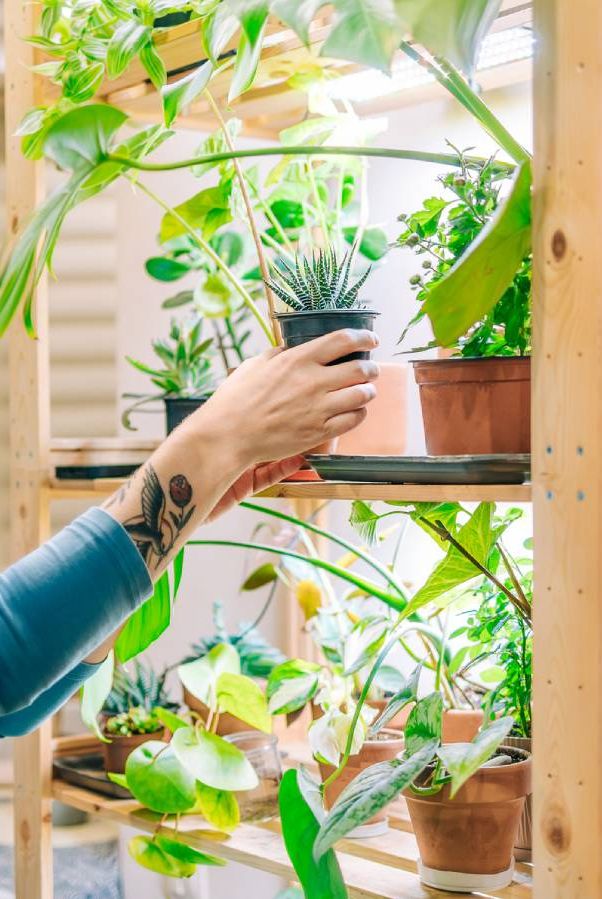
The Benefits
These lights earn their keep. Each year, my peppers put out more fruit than they did with my old lights and now each bush produces a dozen jars of homemade sauce.
At just under $400, the Spider Farmer light is pricier upfront than bargain bulbs, but the savings stack up. You'll cut back monthly power bills because of their efficiency and you'll grow stronger plants, which means savings on plants and seeds that fail to thrive.
In my book, that's a major return on investment just in the first crop. Plus, this LED light can last 50,000 hours without dimming, which means you have years of use ahead of you.
Beyond just the numbers, it's the consistency that justifies this grow light – no more guessing if your plants are getting enough light. Instead you get steady growth that allows you to tweak soil conditions or prune your plants instead of troubleshooting. For anyone serious about indoor growing, it's an upgrade that pays and produces pounds of fresh veggies all year long.
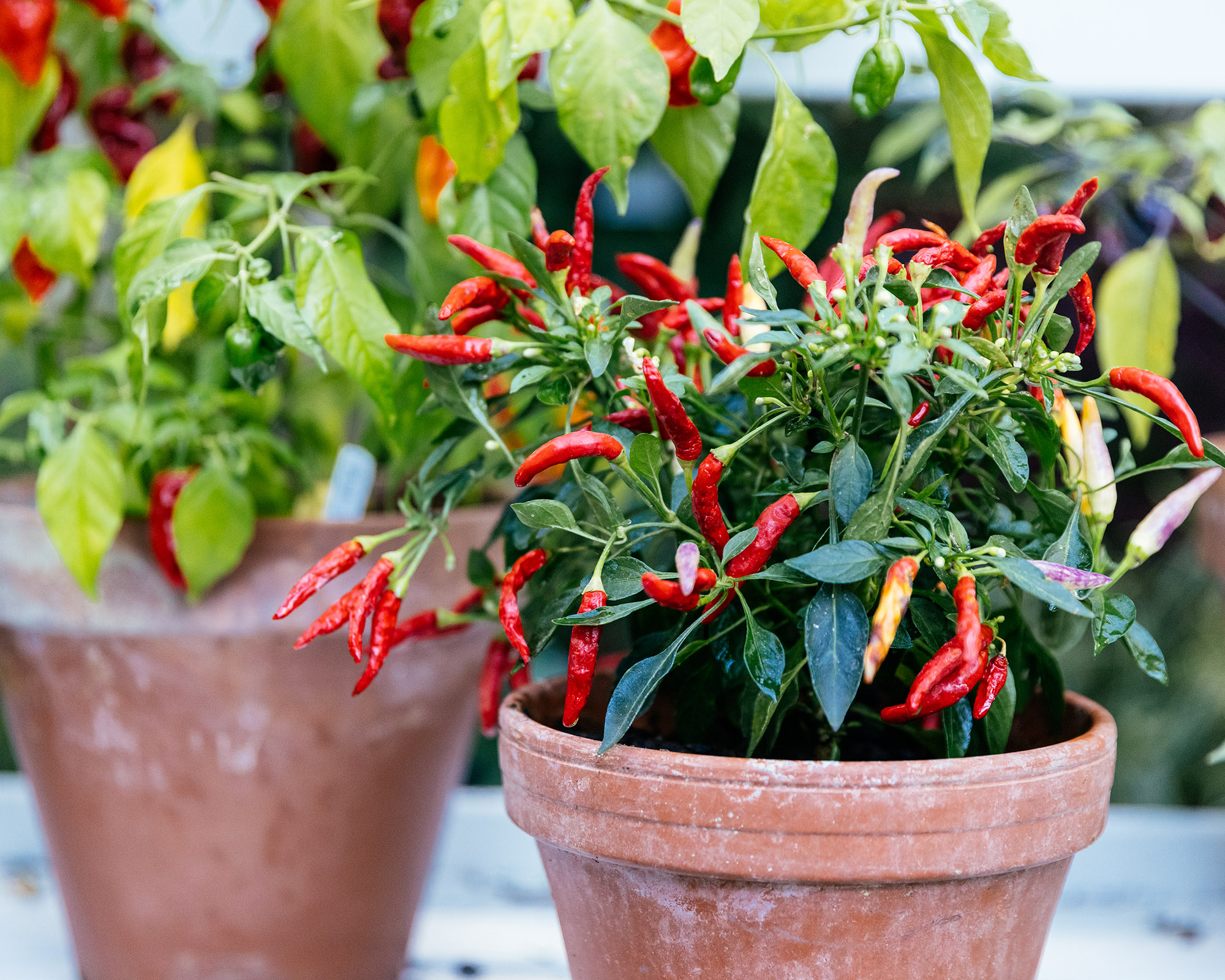
Why You Should Buy This Grow Light
If you're just dipping your toe into growing peppers, tomatoes, or greens indoors, the Spider Farmer SF4000 light's forgiving nature makes it easy. There's no steep learning curve with dimmers that can change to match your plants' needs and a large coverage area that fills an entire tent like mine.
Hobbyists with space constraints will love the cooler operation. It helps you avoid the sweat and surge protectors of hotter lights. And indoor gardening pros will appreciate the spectrum that handles every kind of growing need from vegetables to flowers without swapping your setup.
This light is versatile, too. Even beyond its strength for growing peppers, it lets herbs and flowers thrive under its balanced rays. It suits mixed setups without compromise.
Beginners get pro results without the guesswork, and veterans find a reliable workhorse that outperforms hype. In short, if your goal is thriving plants without the drama, this light delivers on every front.
Shop Affordable Alternatives

Tyler’s passion began with indoor gardening and deepened as he studied plant-fungi interactions in controlled settings. With a microbiology background focused on fungi, he’s spent over a decade solving tough and intricate gardening problems. After spinal injuries and brain surgery, Tyler’s approach to gardening changed. It became less about the hobby and more about recovery and adapting to physical limits. His growing success shows that disability doesn’t have to stop you from your goals.
